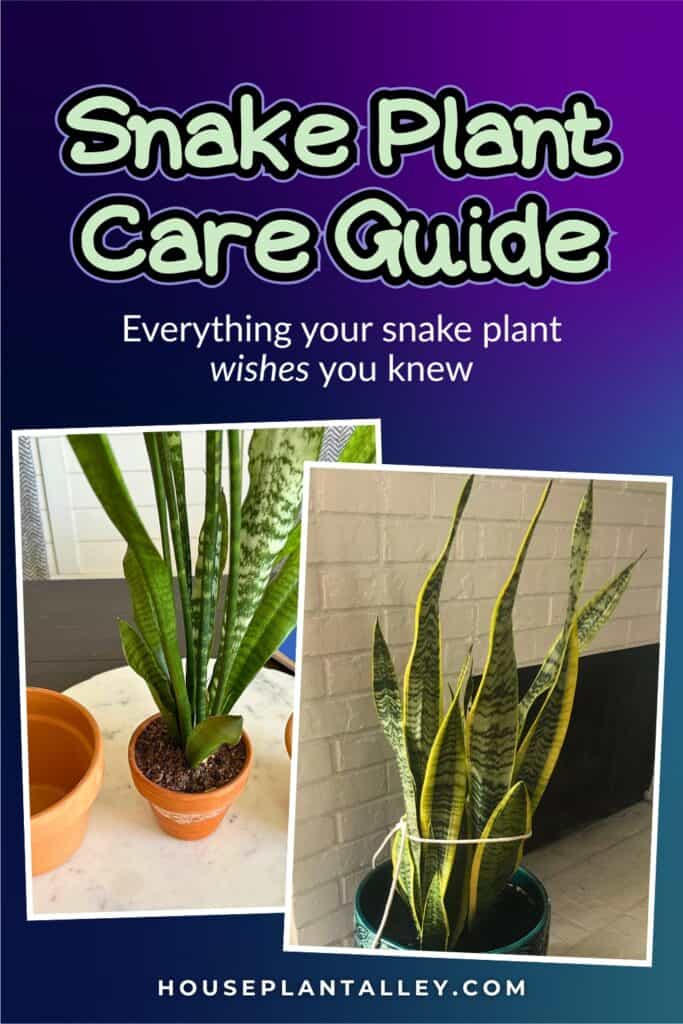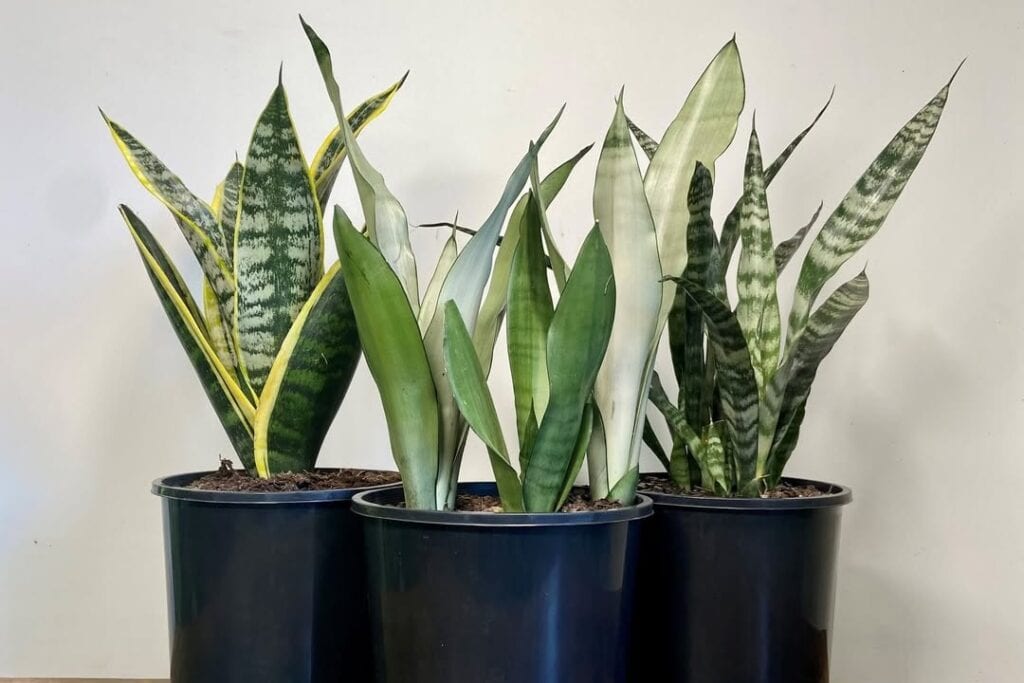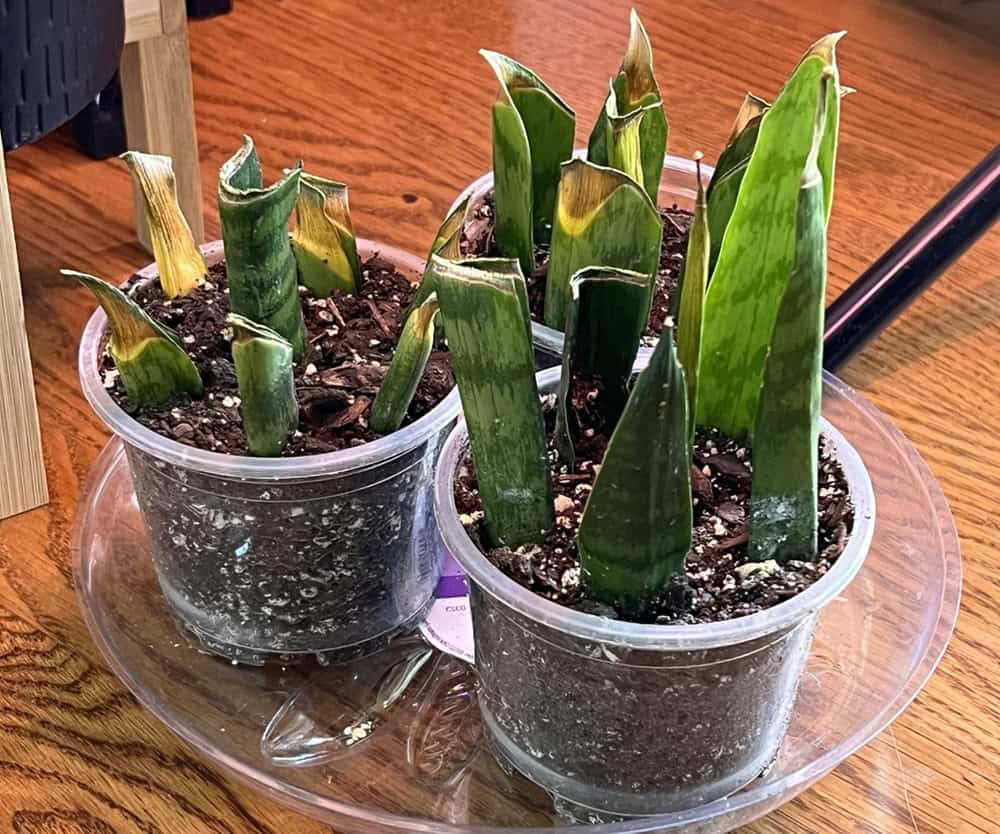If there’s one houseplant that could survive a nuclear apocalypse, it’s the snake plant. You’ll find this resilient species thriving in offices, homes, and even dark corners where other plants quickly wither away. Its thick, sword-like leaves and efficient water-storage system make it nearly impossible to kill – even if you’ve got a track record of turning plants into compost. Before you discover why this botanical warrior ranks as the ultimate choice for plant beginners, let’s explore its remarkable survival tactics.

Contents
The Science Behind Snake Plant’s Resilience
While many houseplants struggle to survive neglect, snake plants have evolved remarkable adaptations that make them nearly indestructible. Their thick, waxy leaves store water efficiently, while specialized cells called stomata close during the day to prevent moisture loss.
You’ll notice your snake plant uses CAM photosynthesis, a process that lets it absorb carbon dioxide at night instead of during hot daylight hours. This adaptation helps it thrive in low-light conditions and use 95% less water than typical houseplants.
The plant’s robust root system and vertical leaf structure also contribute to its hardiness, allowing it to survive up to 6 weeks without water.
Essential Growing Conditions for Optimal Health

Although snake plants can survive in challenging conditions, they’ll truly thrive when provided with the right environment. Place your plant in bright, indirect light, though it can tolerate low light and partial shade. The ideal temperature range is 65-85°F (18-29°C), and they prefer humidity levels between 30-50%.
For soil, use a well-draining potting mix designed for succulents, or create your own by combining regular potting soil with sand and perlite in a 2:1:1 ratio. Choose a pot with drainage holes, and make sure it’s not more than 1-2 inches larger than the root ball.
Water and Light Requirements Made Simple
Despite their reputation as nearly indestructible plants, snake plants need consistent care when it comes to water and light.
You’ll want to keep your plant in indirect sunlight or partial shade, though it’ll tolerate low-light conditions. Direct afternoon sun can scorch the leaves, so filter bright light through a sheer curtain.
For watering, let the soil dry completely between sessions. In winter, you’ll typically water every 4-6 weeks, while summer might require watering every 2-3 weeks. Check moisture by inserting your finger 2 inches into the soil—if it’s dry, it’s time to water thoroughly until it drains from the bottom.
Common Varieties and Their Unique Features
Snake plants come in six popular varieties, each offering distinct patterns and growth habits that’ll make your space more visually interesting. The Trifasciata “Laurentii” features yellow-edged leaves that can grow up to 4 feet tall, while the compact “Hahnii” stays under 6 inches, perfect for small spaces.
You’ll find the cylindrical “Cylindrica” with its round, spear-like leaves reaching 3 feet, and the “Black Gold” showcasing dark green centers with golden margins. The rare “Moonshine” displays silvery-gray foliage, and the “Twisted Sister” charms with its curly, variegated leaves that spiral upward to 15 inches.
Propagation Methods for Growing Your Collection

When you’re ready to expand your snake plant collection, you’ll find that propagation offers three reliable methods: division, leaf cuttings in water, and leaf cuttings in soil.
Division works best with mature plants that have multiple stems. Simply remove the plant from its pot, gently separate the rhizomes, and replant each section in fresh potting mix.
For water propagation, cut healthy leaves into 4-inch sections, ensuring you maintain their upward orientation. Place them in water that covers about 1 inch of the bottom, changing it weekly until roots develop in 3-4 weeks.
Soil propagation follows similar cutting techniques, but you’ll plant sections directly into moist, well-draining soil.
Troubleshooting and Prevention of Common Issues
Although snake plants are known for their resilience, you’ll occasionally encounter issues that need attention. The most common problems include root rot from overwatering, brown leaf tips from fluoride in tap water, and pest infestations like spider mites or mealybugs.
To prevent root rot, only water when the top 2 inches of soil feel completely dry, and guarantee your pot has adequate drainage holes. If you notice yellow, mushy leaves, remove the plant from its pot, trim away damaged roots, and replant in fresh, well-draining soil.
For pest control, wipe leaves monthly with neem oil solution, and isolate affected plants immediately to prevent spread.
